












Our mission is to conserve the globally significant biological diversity of the Osa Peninsula. To protect this unparalleled biodiversity, Osa Conservation leads conservation action from the Pacific Ocean to the Talamanca Mountains.

Osa Conservation is a 501c3 nonprofit.



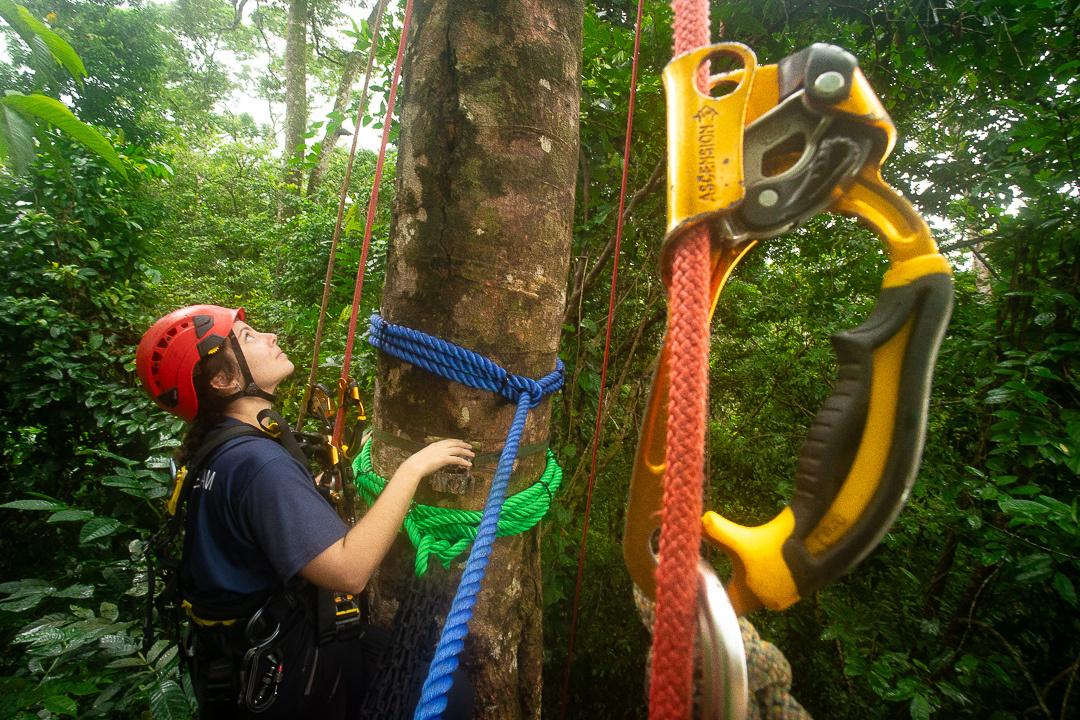



Climate change is perceived to be the greatest threat to long-term human survival. But the synergistic crisis of biodiversity loss, essentiallythedecayoflifeonEarth,isjustas alarming.Whileclimatechangeiscomingto the political and social forefront of a global agenda, nature conservation remains overlooked. It is too often left out of the climate conversation despite these two crisesbeingintrinsicallylinked.
While there is no doubt that climate change is underway, the degree to which it will take effectdependslargelyonhumanaction.The same is true for biodiversity and nature conservation. The extinction crisis is in motion and our actions, not only on climate but in terms of biodiversity conservation approaches, will determine how many species are lost and how many will be saved in a rapidly changing world. Right now, we are creating national parks and implementing conservation strategies largelywithoutclimatechangeinmind.
Osa Conservation is focusing its own programmatic efforts on rebuilding functional habitat connectivity through biological wildlife corridors from Costa Rica’s southern Pacific tropical lowlands of the Osa Peninsula, to the high-elevation wilderness of the Amistad National Peace Park. Establishingconservationlandscapesofhigh ecological integrity along elevational gradients is the most effective approach to building climate resilience for nature. And we are doing so in one of Central America's mostbiodiversity-richregions.
This ‘climate lifeboat for nature’, if restored and preserved to a high level of ecological connectivity, has the potential to conserve >75%ofCostaRica’sbiodiversityandallowas many species to survive climate change as possible.
We hope our site-based work serves as an on-the-ground model for building climate resilienceforpeopleandnatureatscale.This strategy, steeped in ecological and paleohistorical science, can help mitigate the impacts of climate change and protect as manyspeciesaspossiblethroughoutCentral America. This can only be achieved by working with local communities to foster their intrinsic connection to nature and investing in the social capital of the working landscape.
The approach we are leading in AmistOsa to build climate resilience is one we believe should be applied to other high biodiversity regions of the world where nature will be pushedtotheextremesbyclimatechange.
In this year’s report, we detail the impact the Osa Conservation team, collaborators, and local community members are already leading to build long-term climate resilience insouthernCostaRica.
I hope you enjoy the results of our work overjustasingleyear, Dr.
AndrewWhitworth ExecutiveDirector,OsaConservation
AndyWhitworth@osaconservation.org @AndyRainforest
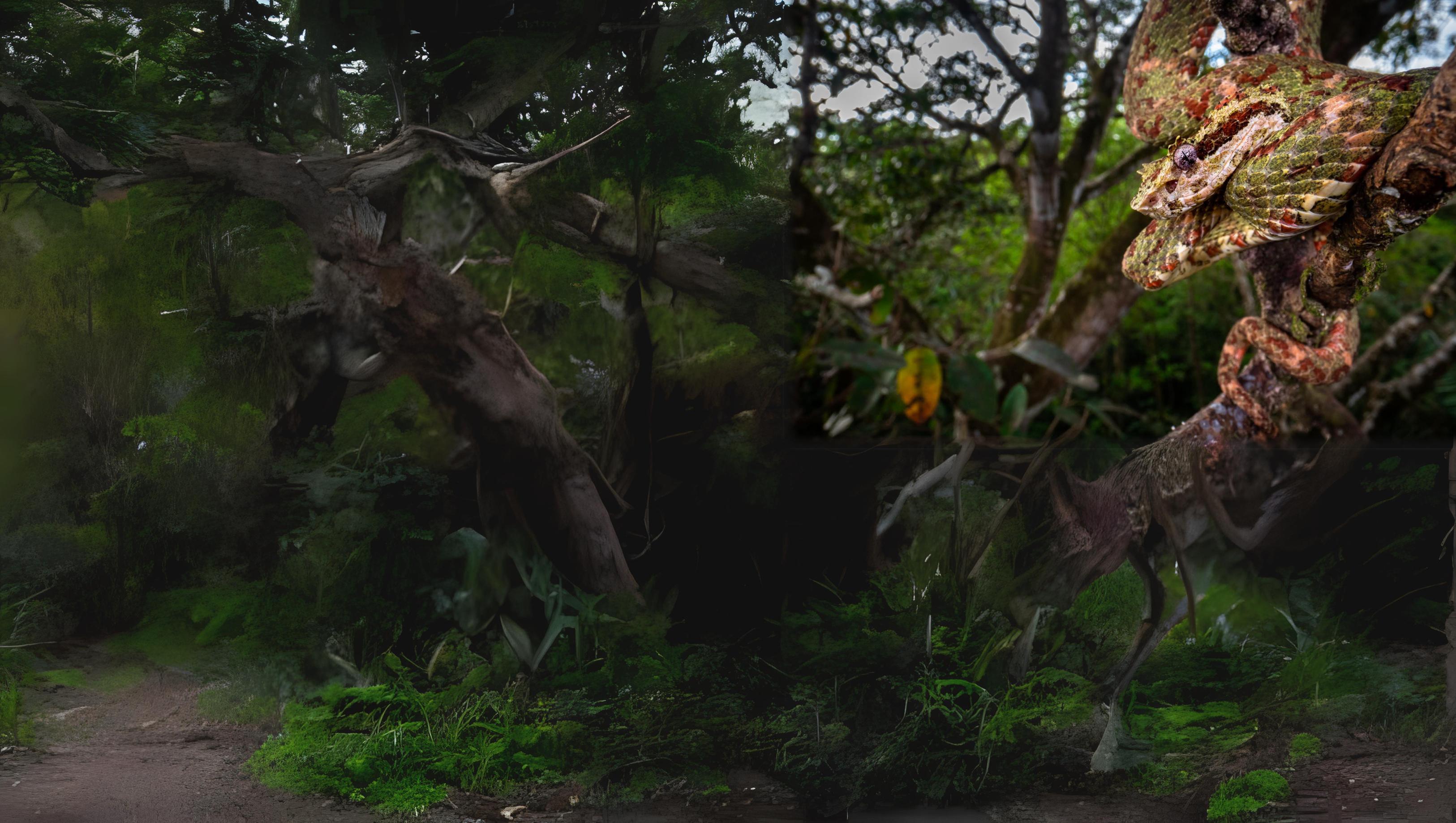
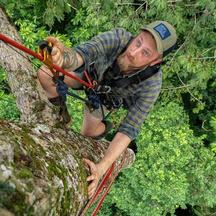


Ourregion-wideworkissteepedinscienceandguidedbyoursixconservationpillars:
1. Transforming Landscapes through Restoration & Rewilding
2. Reforming Food for People and Wildlife
3. Protecting our Blue Planet
4. Putting Technology to the Test for Conservation
5. Community-Driven Conservation
6. An Immersive Educational Experience

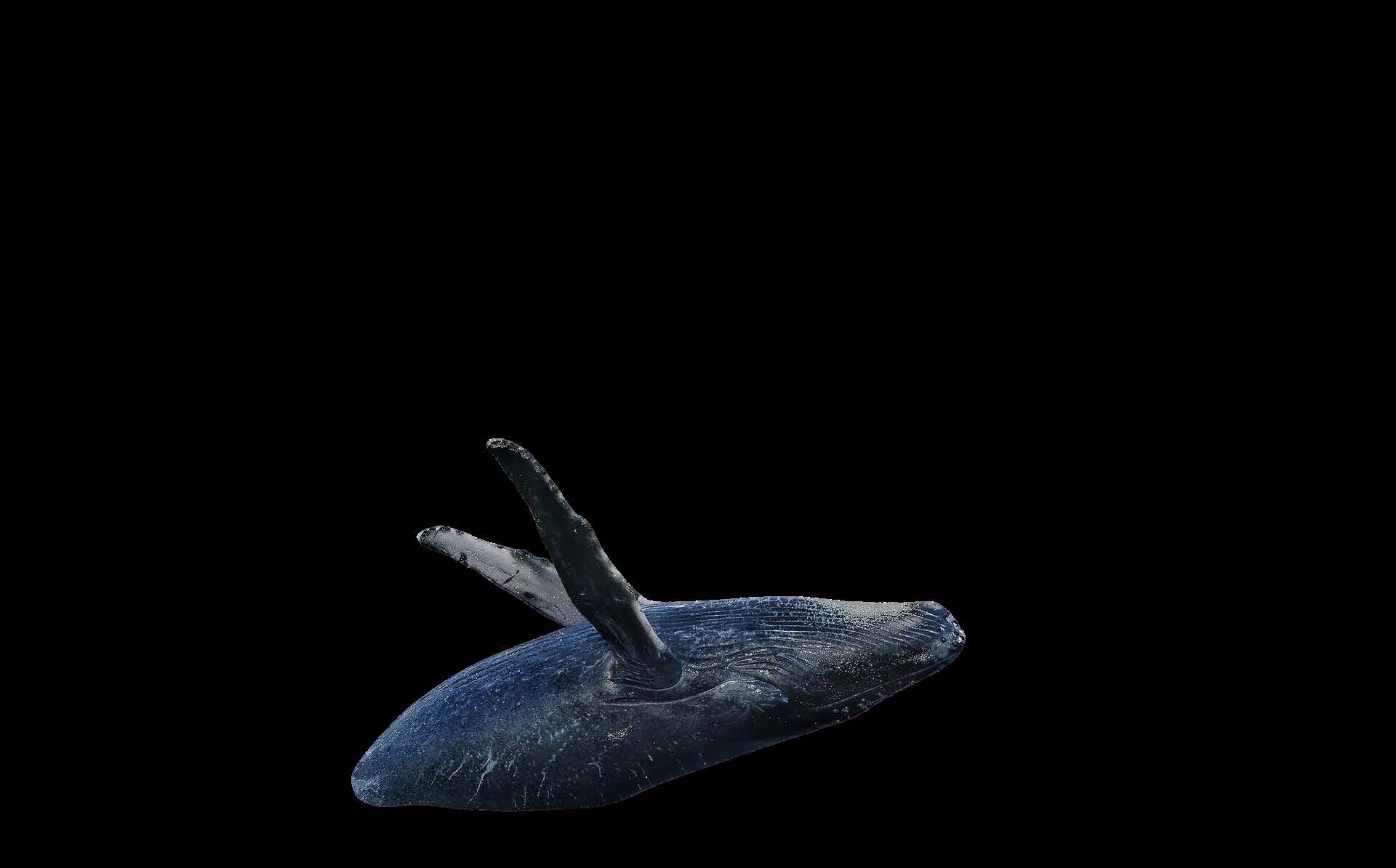


Osa Conservation drives landscape-level change across Costa Rica‘s south Pacific. This includes the largest tracts of old growth rainforests in Central America, extensive wetlands, emblematic wildlife, and hundreds of plants and animals found nowhere else on Earth. In 2023, our impact zone spanned 1,346,801 acres.
51,743 km. patrolled by Rainforest Protectors & Osa Conservation’s Rangers
64,000 Mangroves planted in Central America's largest protected wetland
MAP KEY
Impact Zone
Osa Conservation Wildlife Refuge
Wildlife Monitoring Devices
Nature Education Activities
Restoration Sites & Network Members
Sea Turtle Hatchery
Treetop Bridges
Native Tree Nurseries
Youth Nature Club Chapters
Animals Tracked with GPS

1,874 Pounds of plastic removed from sea turtle nesting habitat

1,360,000
GPS data points reported by vultures GPS transmitters
346 Restoration Network Members
107,565
Rare, native & threatened trees planted
1st

 Olive Ridley sea turtle tagged with GPS transmitter in the region
Olive Ridley sea turtle tagged with GPS transmitter in the region
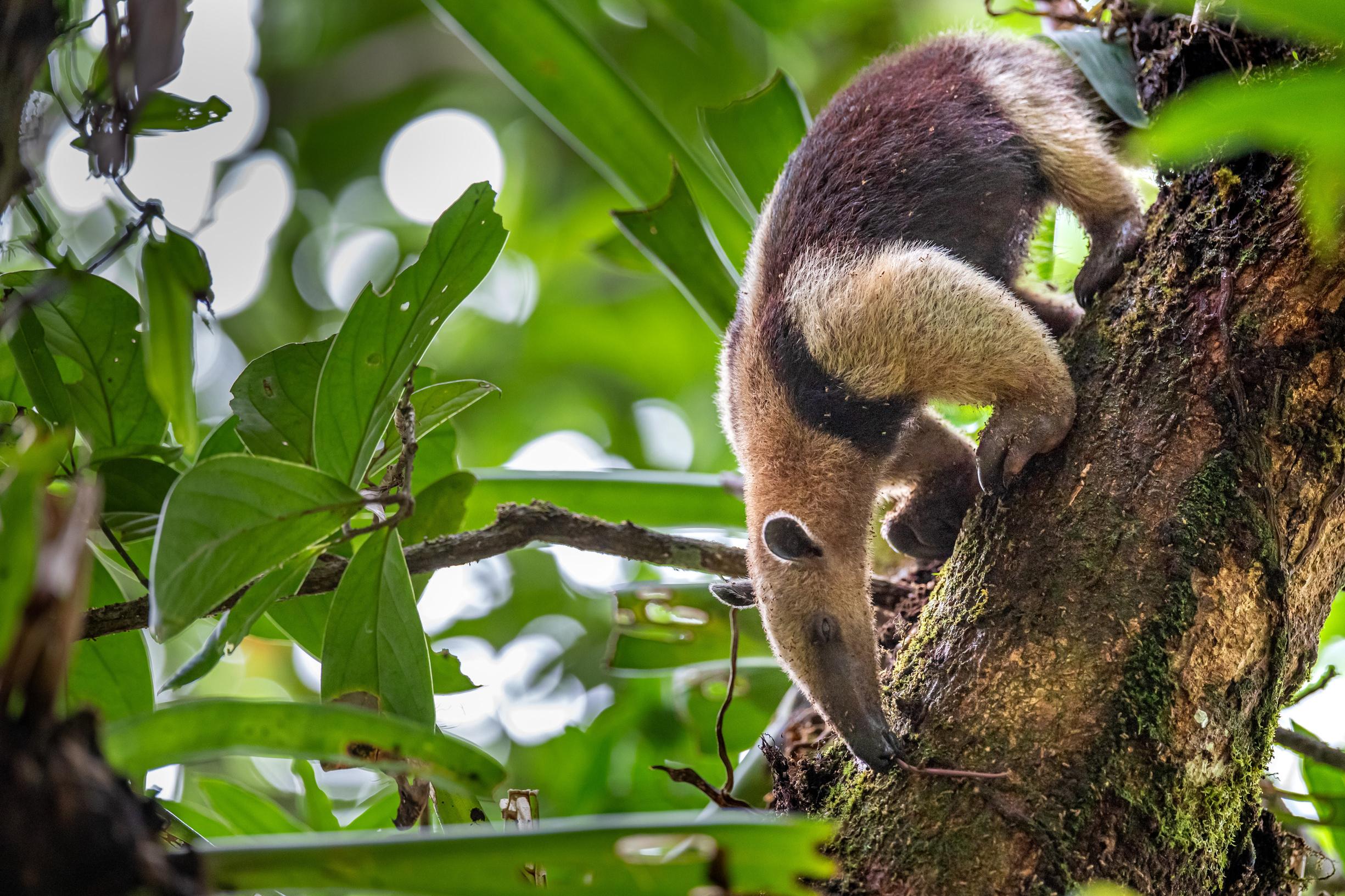
WehavebeeninvolvedwithOsaConservationforover6yearsanditishardto imagineabetter-runormoreimpactfulNGO.
OsaConservationtakesaholisticapproachtotheenvironmentwhilefocusing oncriticallocalchallenges. Theysynchronizeavibrantbiologicalresearch stationwithlocalcommunityinvolvementinconservationandtheyworkto mitigatethewiderglobalimpactsofclimatechangeandbiodiversityloss.
OCputstheircutting-edgescienceandresearchintoaction.Itservesasa shiningexampleofecologicalsustainabilityinCostaRicaandbeyond.
-ANNE&BRIANMAZAR WILDLIFECONSERVATIONSUPPORTERS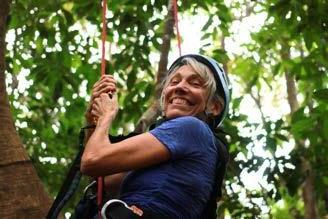
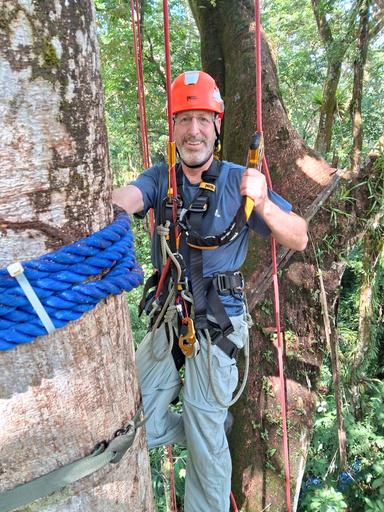

TheOsaConservationteamhosted theRainforestTruststaffretreat withsuchwarmth,unflagging enthusiasm,andabsolute professionalism.Wehad extraordinaryfun,learnedagreat dealaboutCentralAmerican conservation,Osa,andnatural history,andcamehomeexhausted butrefreshed,recharged,andrecommittedtoourconservation mission.Itisanincredibletributeto OsaConservationthateveryoneon ourteamhadfunandlearned,from themostexperienced conservationistsamongusto individualsinfundraisingand administrationwhohadnever visitedarainforestbefore.
Thankstoyou,yourmagicforest andwildlife,yourincredible activities,andaboveallyourhard work,expertise,andgenerosityof spirit,wereturntoourwork recharged.
 -DR.JAMESDEUTSCH CEO,RAINFORESTTRUST
-DR.JAMESDEUTSCH CEO,RAINFORESTTRUST

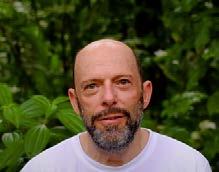


Weworkhand-in-handwiththousandsoflocal communitymemberstorestoreecosystems. Centraltothisisourtreeplantingefforts.This year,werestoredover140hectaresofdegraded landacrossworkinglandscapesandprotected areas.
BECAUSE DIVERSITY IS KEY TO HEALTHY FORESTS,IN2023WEPLANTED
To cultivate such a diverse restoration species portfolio, our team conducted a series of botanical expeditions deep into the rainforest to collect seeds from the region’s rarest and most threatenedspecies.
Everyspeciesweplantisnativeto theregion.Wefocusspecificallyon plantingrareandendemictrees. Toensureweareplantingthemostresilient species,webuiltanativetreenurserynetwork thatincludesfivenurseriesandspansover 1,000meters(3,280feet)ofelevation.
Overadozenlocalcommunitiesareinvolved inthemaintenance,propagation,and plantingatournativetreenurseries.
=NativeTreeNursery


18,000
IN2023,WEPLANTED
107,565 NATIVETREES.
That’s over 26,500 trees more than last year, making this our most impactful restoration season to date. Thanks to growing buy-in from thelocalcommunityandourteam...

64,945
81,062
thisyear,weplantedmore treesthaneverbeforeinour organization’shistory. 2023
107,565
Wearebuildinglong-termresilienceforpeopleandnaturethroughtherestorationofCosta Rica’slargestandmostsignificantmangroveforest.
Thiscommunity-ledinitiativehasdriventheassistedregenerationof131.6hectaresofdegraded mangrove.Theprojectprovidesover50localrestorationjobsannually.
IN2023,WERESTORED 40 hectares OFMANGROVEFORESTBY PLANTING64,000PROPAGULES.
Inadditiontoincreasingtheecosystemservicesderivedfromtherestoredhabitat,thisproject buildsmoresustainablelivelihoodsforthelocalcommunitywholiveandworkwithinthe mangrovesystem.Bydiversifyingincomestreamsbeyondrestorationwork,weareshiftingthe socialfabrictoaddressthetriplecrisisofclimatechange,biodiversityloss,andinequality.Inthe faceofclimatechangeandbiodiversityloss,sustainablecommunitiesandhealthymangrove forestsbolsterlandscape-levelresilienceforlandandsea.

Already, the project’s restoration success is evident. The first plots, planted in 2018, are naturally regenerating and providing habitat for wildlife including the endangered endemic Mangrove Hummingbird. Key to this success is the maintenance of newly restored landscapes,whichallowsyoungtreestogrowstrongenoughtosurviveontheirown. PlotB,2021



In addition to mangrove restoration, our work helps diversify income streams for local community members who previously relied on deforestationorextractionfortheirlivelihoods.

In2023,weledanintensiveyear-longtrainingto certify 12 community members in mangrove honey production, an untapped local market withincrediblepotentialforgrowth.
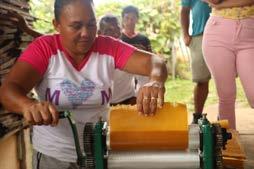
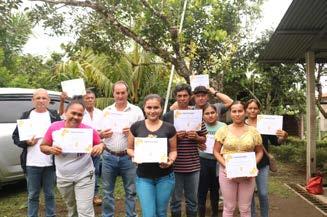
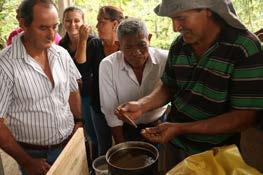
Localcommunitymemberswerealsotrainedto monitor biodiversity using citizen science technology apps such as iNaturalist, eBird, and EarthRanger. This helps build their professional toolkit and supports long-term biodiversity monitoring.
Wealsoledmonthlyoutingsfortwodozenlocal school children to support tree planting, seed collection,biodiversitymonitoring,andmore.


Historic deforestation, mining, and poaching pushed a handful of key species to be locally extirpated, including the mega-herds of whitelippedpeccary thatpreviouslyroamed southern Costa Rica. The white-lipped peccary is a keystonespeciesandtheprimarypreysourceofthe jaguar, an apex predator. In Piedras Blancas National Park the species has become locally extirpated, which has impacted the integrity of the food chain and the resilience of the region in the faceofclimatechange.
(Tayassupecari)
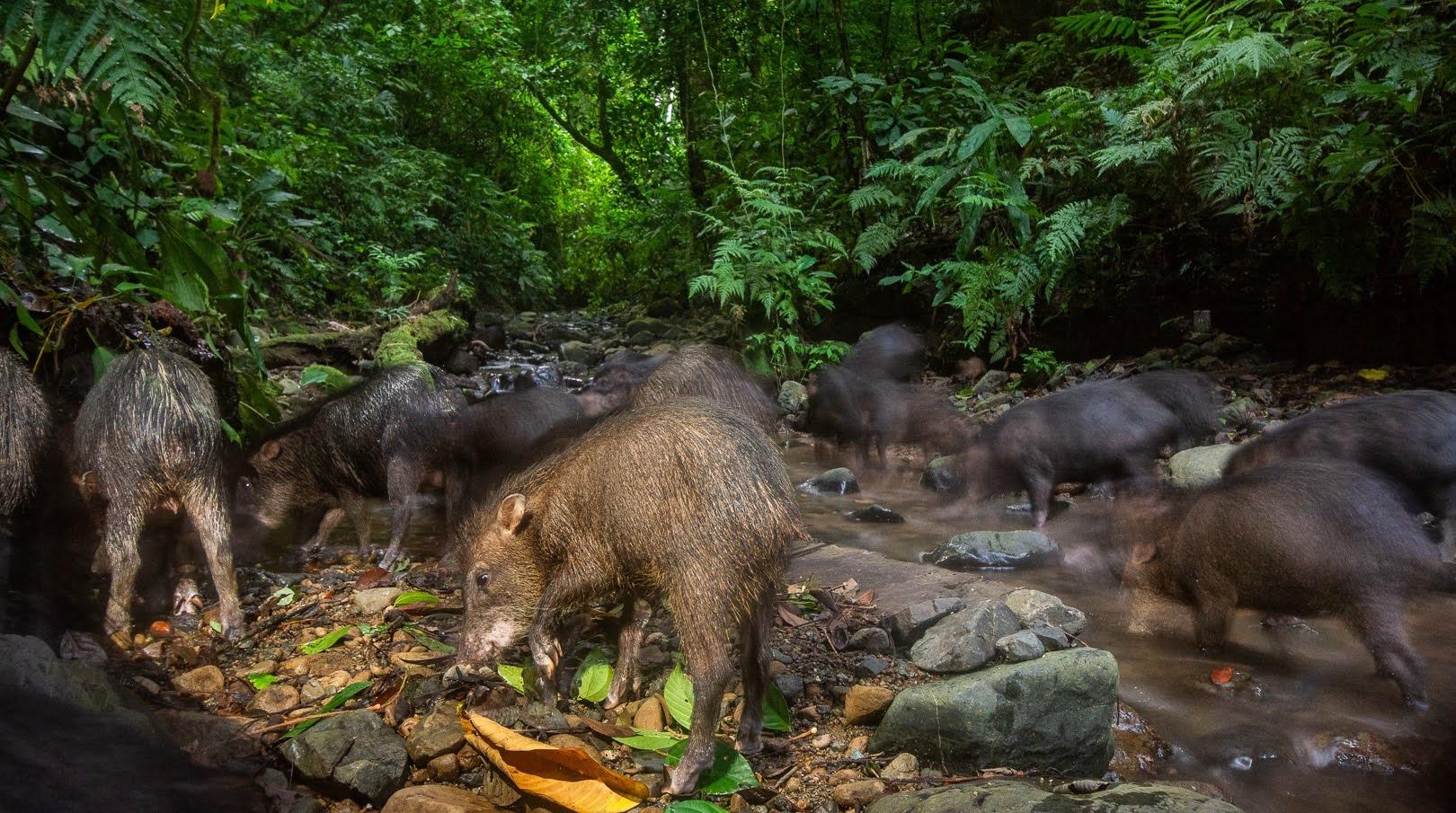
Despite historic degradation, today over half of Costa Rica’s land is forest cover. The country has a world-class network of protected areas and on the OsaPeninsulalocalcommunitiesarealreadytaking actiontosafeguardthreatenedwildlife.
Now, it is time to bring back the species that are missing.
IN2023,WELAUNCHED OURREWILDINGINITIATIVETO
PIEDRASBLANCASNATIONALPARK.
This year, together with the National System of Conservation Areas, we developed an action plan for the conservation of the white-lipped peccary that includes the reintroduction of the species in thePiedrasBlancasNationalPark.
Aftermonthsofbuildingtherelationshiptoinclude rewilding on the official agenda of the Government in Costa Rica, the action plan will be implemented in2024.
In addition to reintroduction, we use numerous rewilding techniques to facilitate wildlife movement. This includes planting nativefruittreesandinstallingbatboxesinfreshlyrestoredareasto expedite seed dispersal, insect control, and pollinator recovery. We also deploy treetop bridges to facilitate the movement of arboreal wildlifepopulationsacrossroadsthatfragmenthabitat.
THISYEAR,WEMAINTAINED
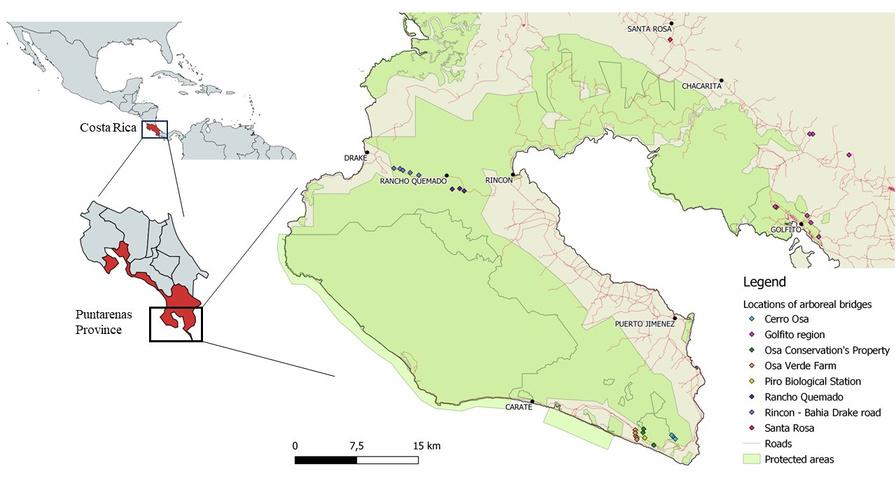

Afterthreeyearsofinstalling,redesigning, monitoring, and maintaining this network of arboreal bridges, in 2023wedocumentedthefirstCentralAmericanSpiderMonkeys
(Ateles geoffroyi) onthebridges-apromisingsignthatthisendangered
species and vital seed disperser will learn to cross the bridge and expandtheircurrentdistribution.
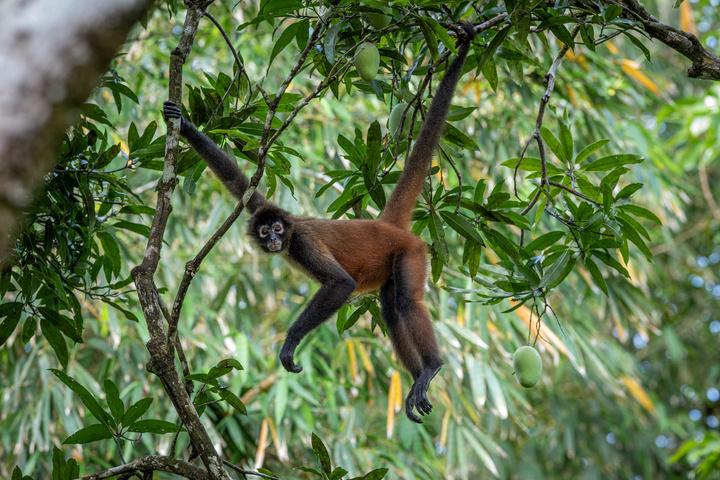
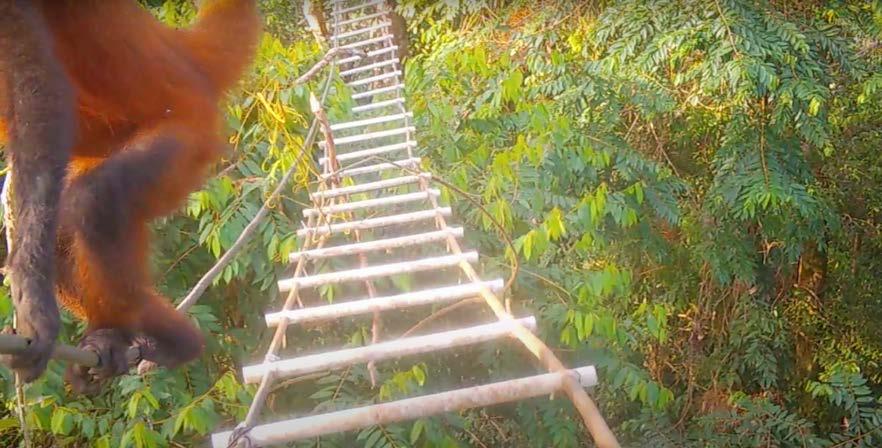
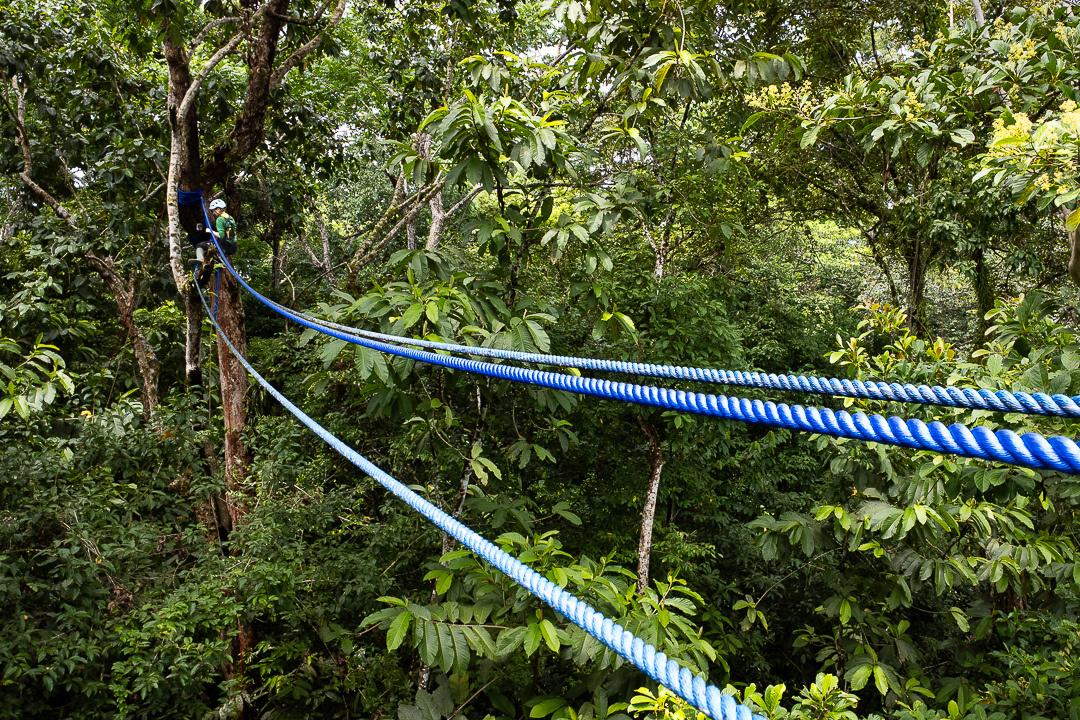

We work with local farmers on private land to build sustainable production systems while restoring habitat connectivity.
Our goal is to restore working agricultural landscapes so the land is 1) more productive for farmers and 2) more resilient for people and nature in the face of climate change.
IN2023,OURRESTORATIONNETWORKREACHED
346 LOCALLANDOWNERS.
That’s up from 210 at the end of 2022. Over the past year, wegrewourrestorationnetworkby65%.
Therestorationnetwork
iscentraltoourefforts
tobuildafunctioning
biologicalcorridorthat
connectsthelowland
protectedareastothe
mountainousAmistad
NationalPark.Thisisa groupoflocalland ownerswhoarecommittedto restoringprivatelyownedworking landscapestobuildlandscape-level connectivity.
ACROSS OUR RESTORATION NETWORK, WE RESTORED
96HECTARES OFDEGRADEDFARMLAND.
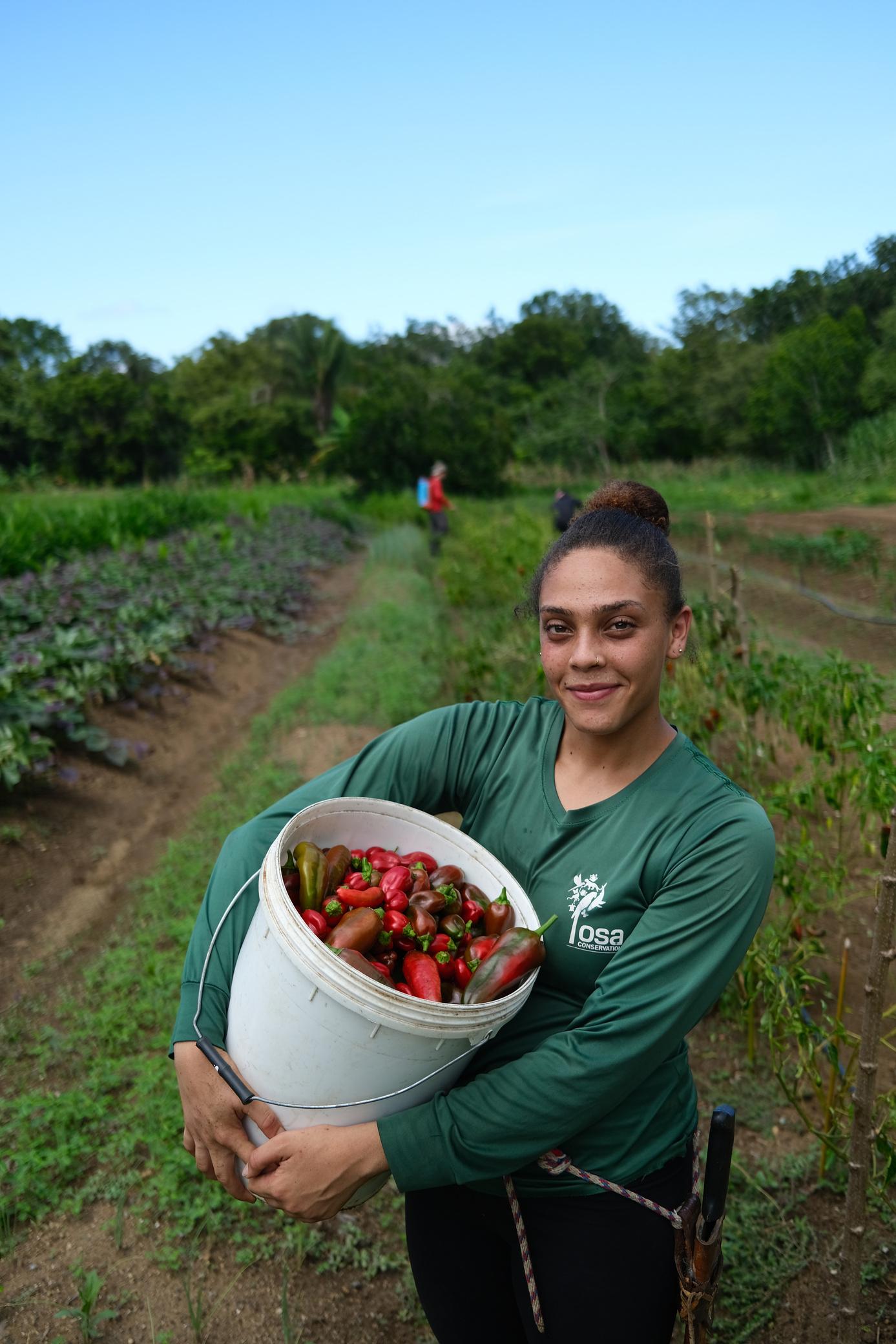



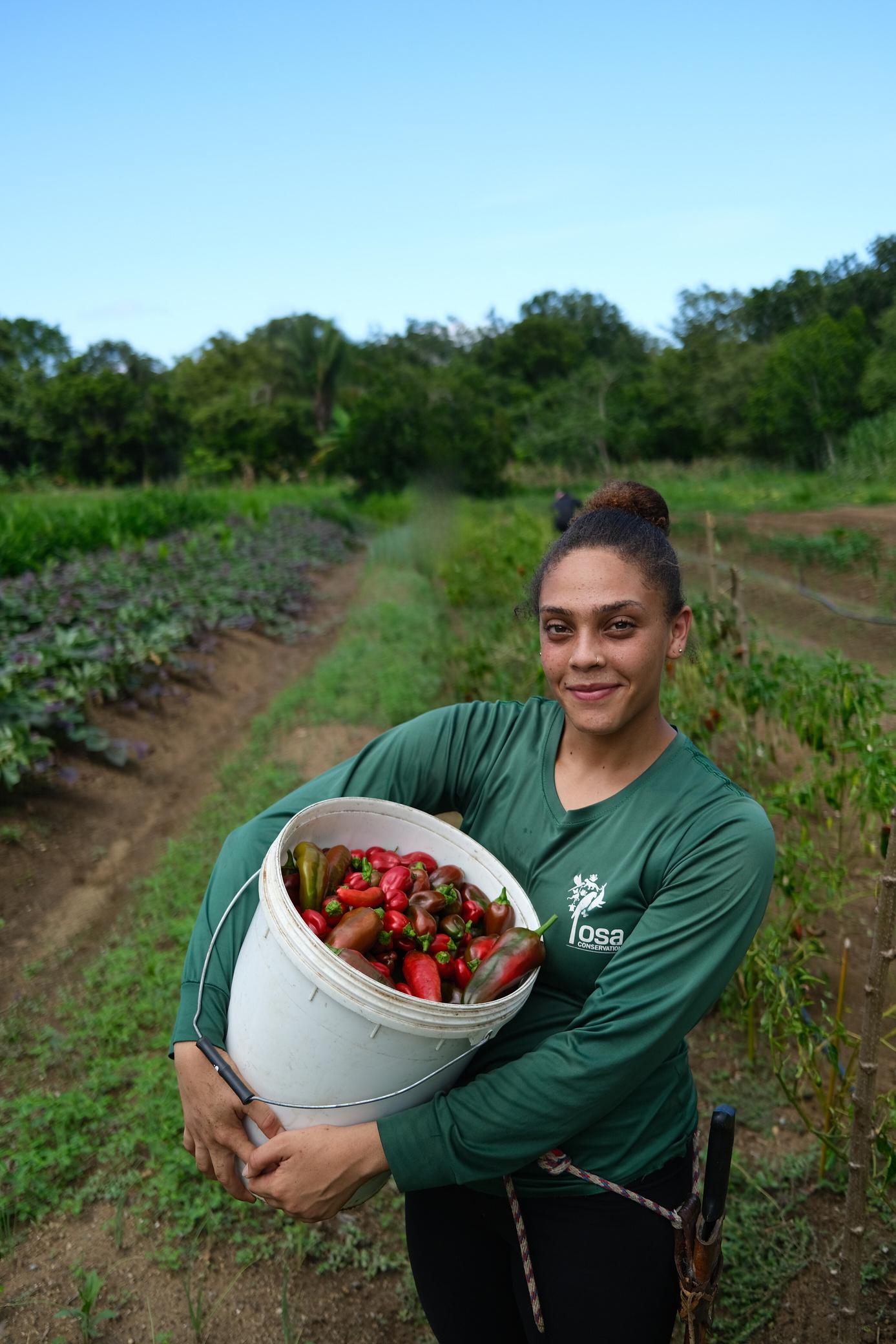
At the Osa Conservation Campus, we run the Osa Verde Regenerative Farm, a model system to trial regenerativefarmingpracticesinthetropicswiththe goalofscalingourfindingsthroughouttheregion.
IN2023,THEOSAVERDE REGENERATIVEFARMPROVIDED FRESHPRODUCE TOLOCALLODGES& restaurants, as well as supplementing our kitchen at theOsaConservationCampus.
Since 2011, Osa Conservation’s Sea Turtle Conservation program has conducted research, collected data, and worked closely with local and international communities to protect sea turtle populations. We have protected over 13,600 nests and released 217,707 hatchlings throughout this time on Piro and Pejeperro beaches, whichprovidenestinghabitatforfouroftheworld’ssevenseaturtlespecies.
IN 2023, WE PROTECTED
9,007 VULNERABLESEA TURTLEHATCHLINGS.
Thisyear,OsaConservationdeployedthe
WEREMOVED
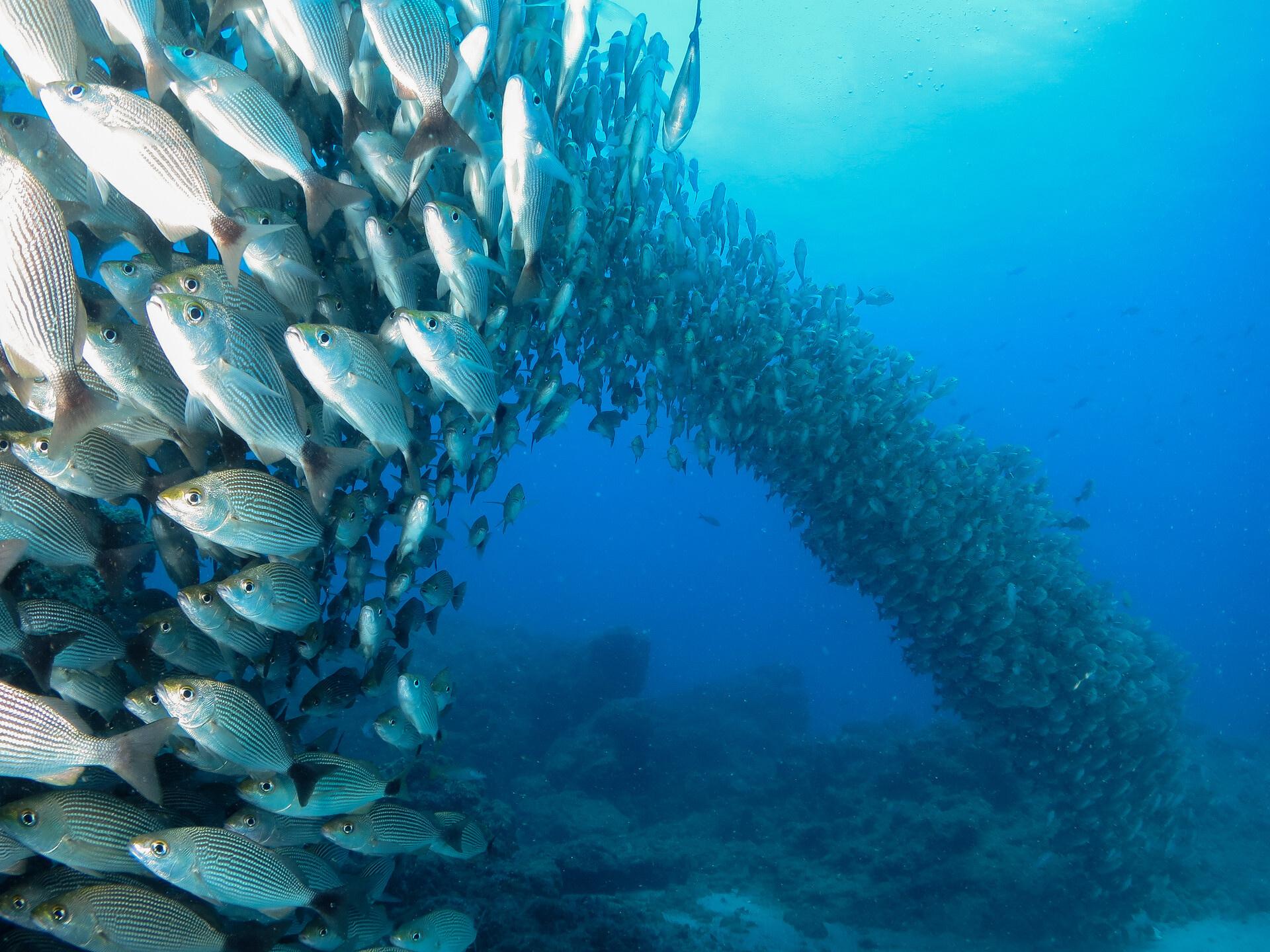

(Lepidochelysolivacea)

onanOliveRidley intheregion.Thissatellitedevice, deployedonafemaleOliveRidley, allowsustomonitorhermovements andmigrationpatterns.
1,874LBS. OFTRASHFROMCRITICAL SEATURTLENESTINGHABITAT. & Galapagos Islands
Notonlydoesthisprovideinsightonthe elusivelifeofseaturtlesatsea,whichis incrediblydifficulttostudy,butalso showstheunparalleledvalueoftransnationalMarineProtectedAreasthat safeguardtheswim-ways marine animalsrelyon.Inherfirstthree monthswiththeGPStag,thisturtlehas alreadyswamhundredsofmilesalong theCocos-GalapagosSwimway.
InadditiontoGPSdata,ourteamof professional wildlife veterinarians, marinebiologists,andconservationists collectedbiologicalsamplestoresearch howtheseanimalshavebeenimpacted byenvironmentalcontaminantsand habitatalteration.
Turtles cannot feel the device. The GPS attachment is non-invasive.

 Costa Rica
Cocos Island
Costa Rica
Cocos Island
We work with coastal communities across the region to protect the marine richness of the Osa Peninsula.We:
1)enhanceeconomicopportunities tosupportcoastallivelihoods,
2)restoremarineecosystems,and
3) monitor marine habitats and speciestoinformmanagementand protectionstrategies.
Central to our mission is the establishment of the Corcovado Marine Protected Area (MPA), which would safeguard marine habitat off the coast of Corcovado
NationalParkandhelpensurelongterm resilience of artisanal fishers and coastal community members. This MPA would become a key piece of the Cocos-Galapagos swimway, as it would connect the protected swimway network to the mainland.
In addition to working directly with the national government to streamline the establishment of the MPA, we are cultivating the buy-in of local communities so they are prepared to capitalize on the sustainable benefits an MPA would bringtotheirlivelihoods.
IN2023,WEENGAGED 9COASTALCOMMUNITIES

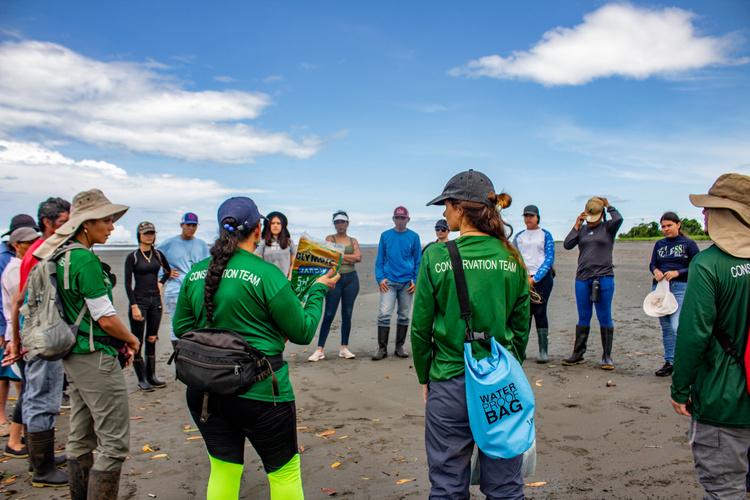



The health of humans, animals, and the environment are inextricably linked. Key to this are vultures, who prevent disease spread through carcass consumption, essentially cleaning habitats to maintain the well-being of animals, people, and environments. The problem is neotropical vultures remain critically understudied. We are utilizing novel technology to unveil landscape-level understandings of vulture movement,behavior,health,andthreats,aswellasvultureinteractions withpredators(jaguars,pumas,ocelots).
To conduct research on these understudied species, we are deploying solar-poweredGPSharnessesonvulturesthroughouttheneotropics. Thismulti-yearprojecthas
To scale the impact of this project and address global knowledge gaps, we are studying critical scavenger networks in Earth’s most productive and biodiverse areas. This international project has deployedGPSbackpacksinCostaRica,Ecuador,andPeru.
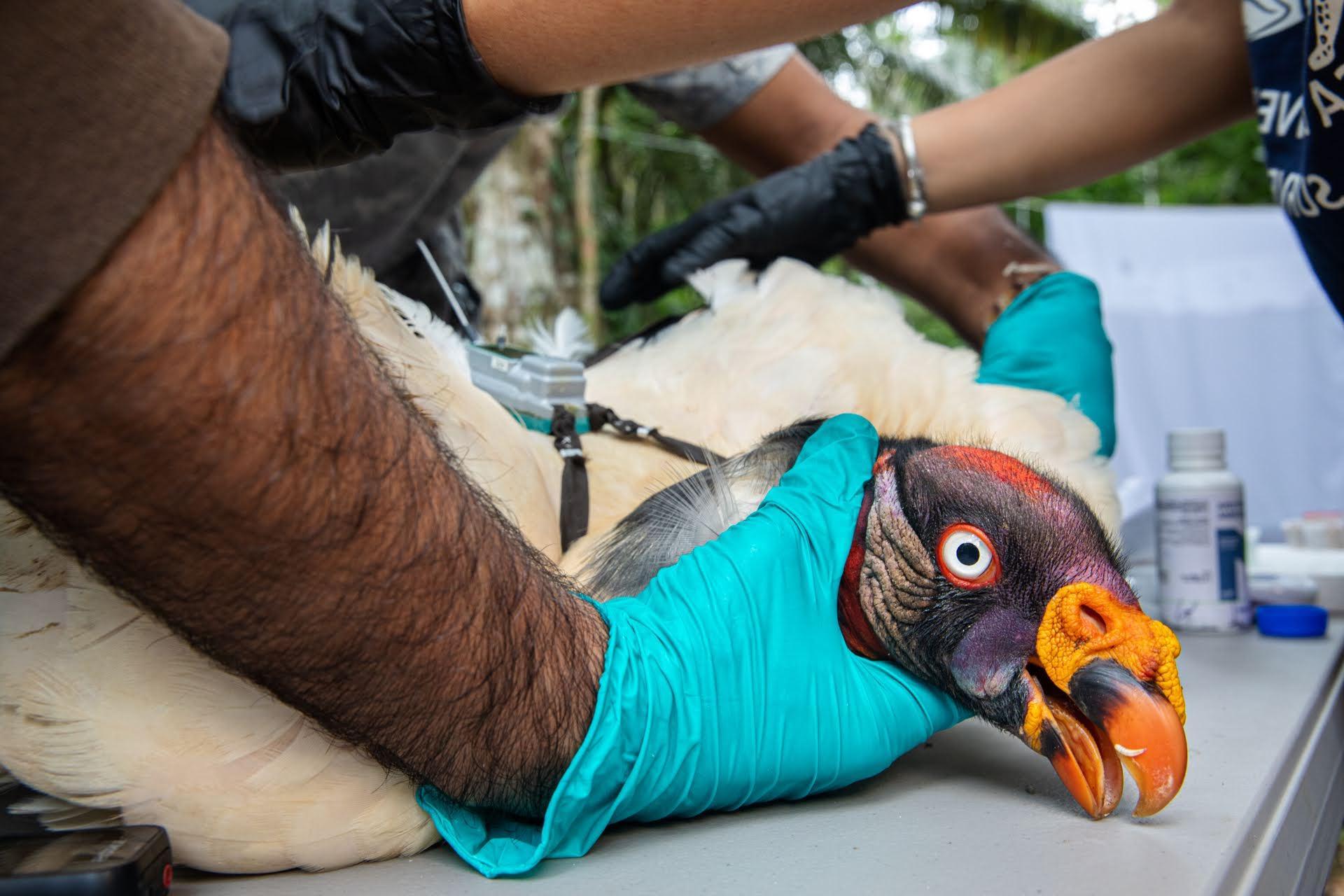

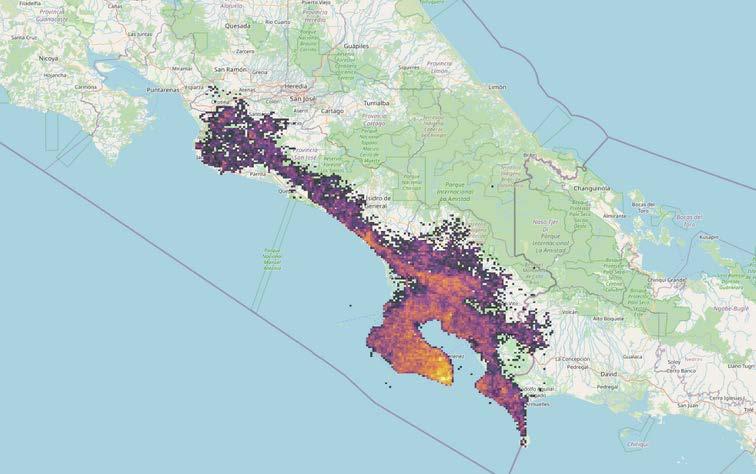

IN TOTAL, WE HAVE COLLECTED OVER 1,360,000DATAPOINTS.
Thisdataisatreasuretroveofinformationtoanalyzeandderive insights from. Already, we have uncovered new patterns of speciesmovementandinteractions.Forexample,thismap(left) indicatesvulturesavoidareaswithhigh-impactagricultureand limitedforestcanopy,highlightingthesignificanceofforestsfor ecosystem, animal, and human well-being. Beyond movement data, we are also using biological samples to research vulture health including exposure/contamination to pesticides, heavy metals,andantibioticresistance.

In addition to vulture research, we are studying the movement of predators. In 2023, we deployed 65 camera traps across our study areas in Costa Rica and Peru to monitorcarnivoreactivityandhowitrelates toscavengermovement.
We empower environmental stewardship by leading nature-based learning experiences to connect people with Costa Rica’s most wild places. Our network of thousands of citizen scientists works together to shift mindsets, change actions, and cultivate the next generation of conservationleaders.
THIS YEAR, WE LED
OurMontañaalMar(RidgetoReef)YouthNatureClubprovidesfreeoutdoorimmersion opportunitiesforCostaRica’smostimpoverishedchildren.Theseexperiencesinclude:
SnorkelingexcursionsintheGolfoDulce
Intertidalzoneexploration
Mangroverestorationexcursions
Regenerativefarmingworkshops
Rivermonitoringtoidentifyinvertebratecommunities
Rareandnativetreeplanting
Rainforestcanopyclimbingtolearnabouttreetopbiodiversity
Field-basedwildlifeidentificationworkshops
Seaturtlepatrolsandhatchlingreleases
Beachclean-ups


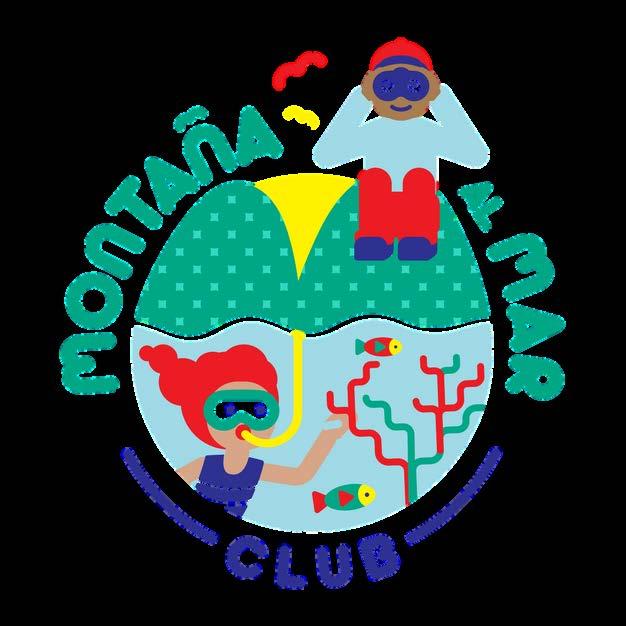
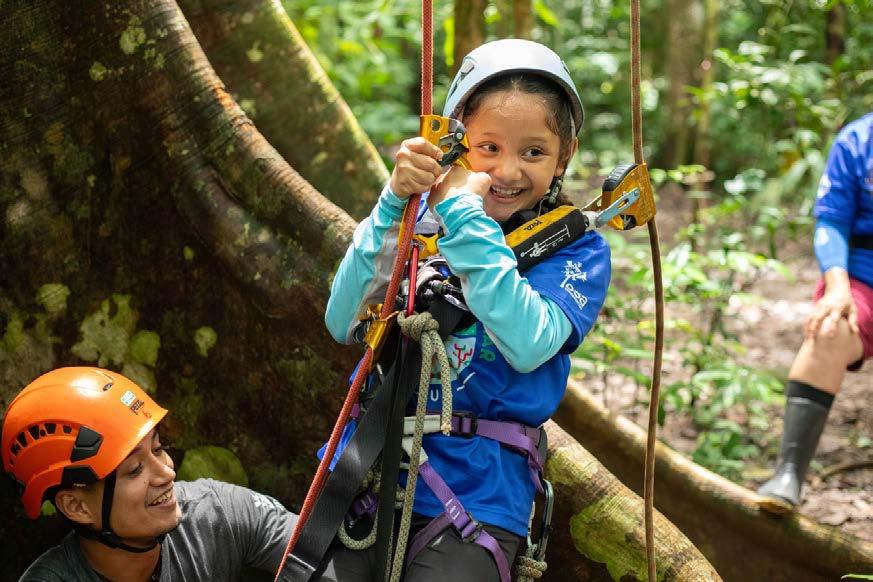
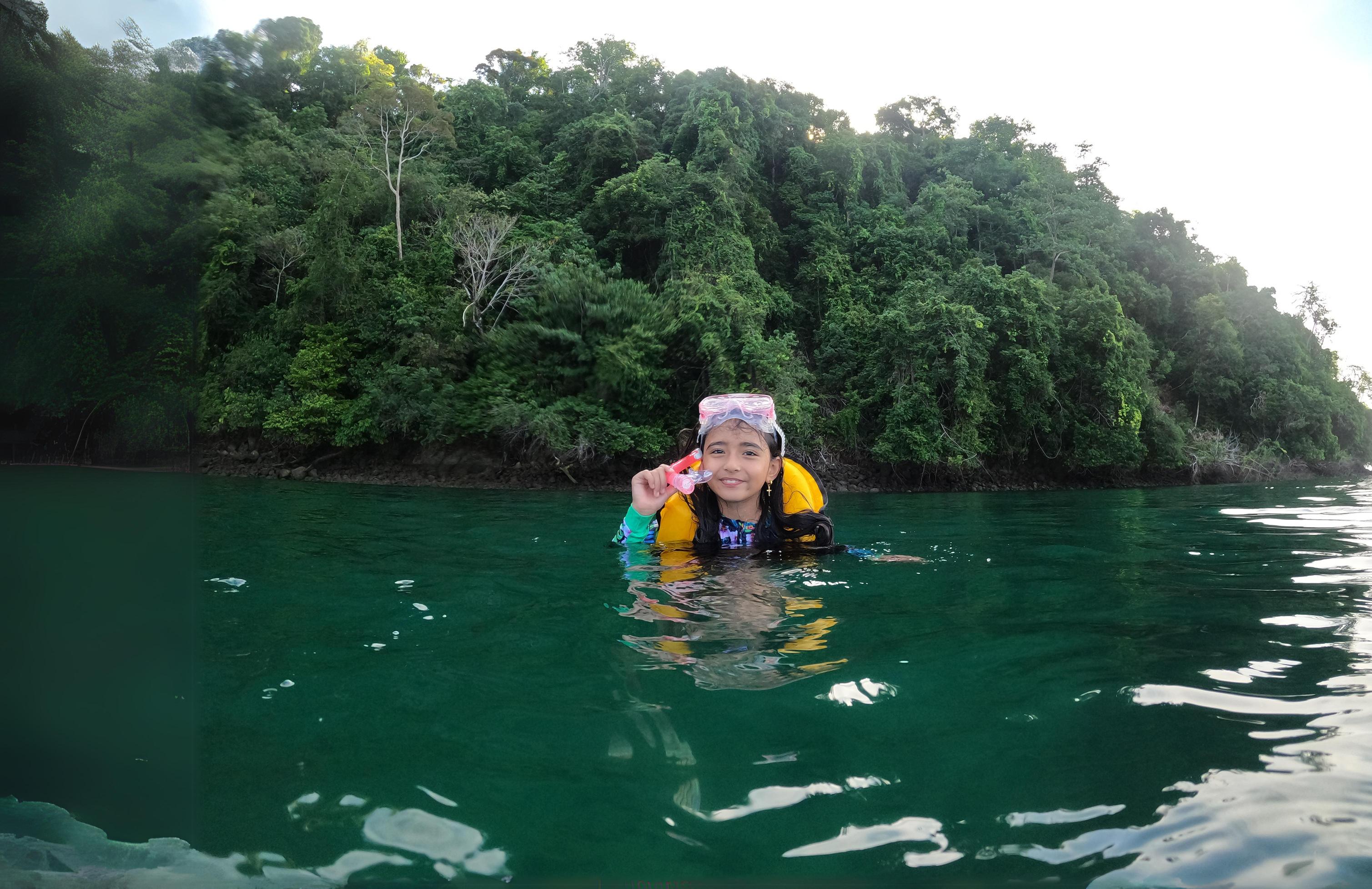

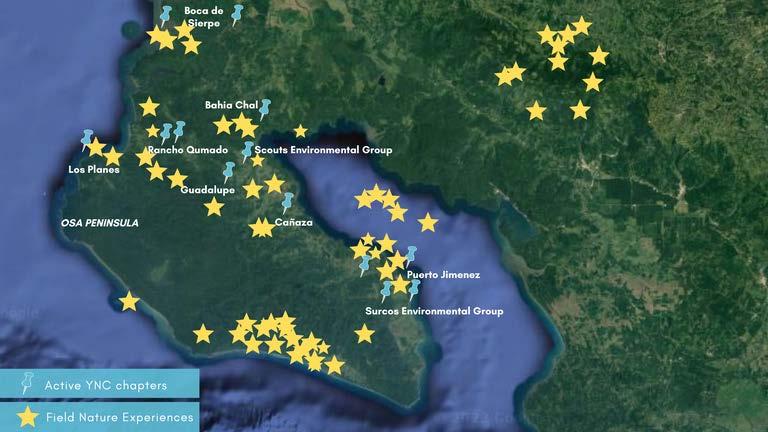
In2023, wegrewour YouthNature Clubto13 chapters acrossthe region.
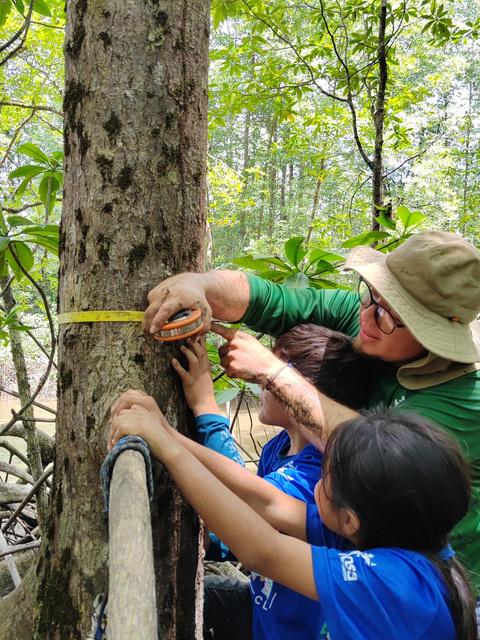
WE REACH AN AVERAGE OF 400LOCALCHILDREN EACHYEAR.

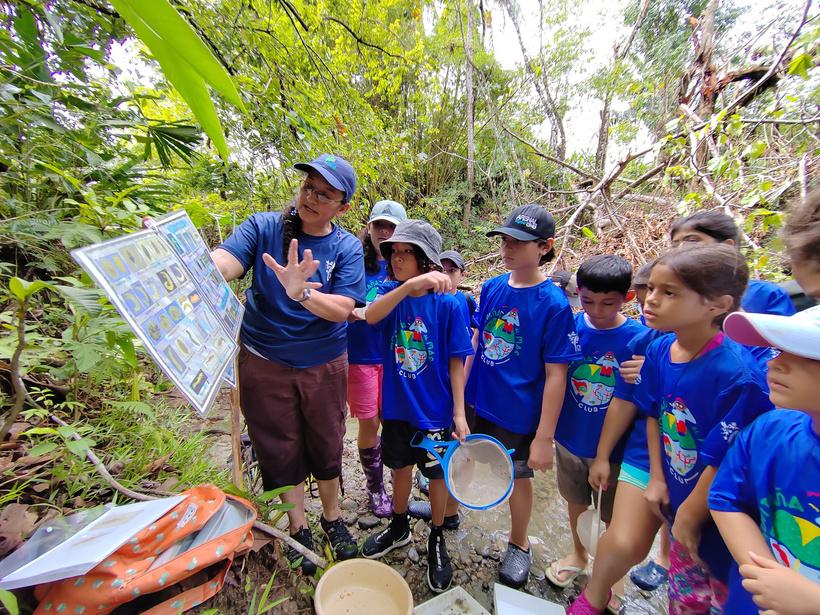
In 2023, we hosted a 4-day workshop for 23 local professional Naturalist Guides to promote sustainable and conservation-friendly guiding practices.
We also hosted 21 recently graduated Naturalist Guides from the local community of Puerto Jiménez to share Osa Conservation Campus and the results of our projects to increase fruitful relationships and engagement with the localcommunity.




WE ENGAGE AN AVERAGE OF
4,908LOCALCOMMUNITY MEMBERSEACHYEARINHANDS-ONCONSERVATIONACTION.
Our Rainforest Protector model brings together dozens of volunteer rangers from throughout the region dedicated to protecting the naturalresourcesoftheirhome.In2023,wecoordinatedandexecuted 14 Rainforest Protector field expeditions to advance control and protectionskills.Thisyear,3newcommunitiesjoinedourinitiative.
In 2023, the Rainforest Protectors patrolled 31,076.2 km (19309 mi), submitted 197 reports to Earth Ranger, and generated 22,587 biodiversityobservationsintoiNaturalistof6,535knownspecies.
 - YOLANDA RODRIGUEZ, RAINFOREST PROTECTOR
- YOLANDA RODRIGUEZ, RAINFOREST PROTECTOR





Osa Conservation's efforts are guided by scientific evidence. Parallel to this, the scientific output of our work is key to maximizing our impact and propelling conservation at scale throughout the world’s tropics. In 2023, researchers from the Osa Conservation team contributed to five scientific papers published in peer-reviewed journals:
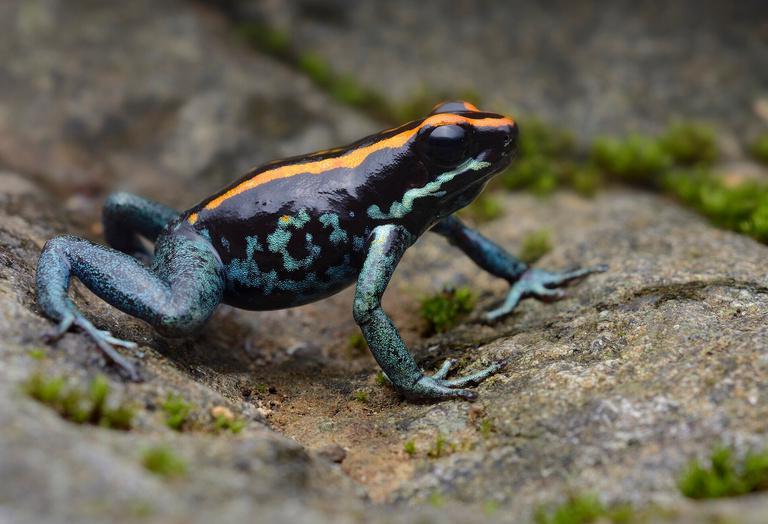
“Remotesensingandcitizensciencetocharacterizethe ecologicalnicheofanendemic&endangered CostaRicanpoisonfrog”
Amphibia-Reptilia,March2023
Thepoisonfrog Phyllobatesvittatus isanendemicfrog from Costa Rica, meaning it can be found here and nowhereelseintheworld.
We already know that habitat encroachment can have devastating effects on biodiversity, especially amphibians.
Thisstudyusedremotesensingtocreatealandcover map of the region and carry out modeling to identify the key components of ecosystems where the frog lives. This study relied not only on the research team butalsoondatacollectedbyanetworkoflocalcitizen scientists.
Currently, P. vittatus ismostlylocatedwithinprotected areas. This study identified potential areas for reintroductions. It also calculated the area of occupancy and recommended that P. vittatus’ status beadjustedto“Endangered.”
Due to their rarity and often sparse distributions, threatened species can be difficult to study. This study collected nearly 36,000 hours of acoustic data across 341 study sites to show how AI and passive acoustic monitoring together can successfully detect the endangered Geoffroy's spidermonkey(Atelesgeoffroyi).
This research revealed that the endangered species was absent below a threshold of 80% forest cover and within 1 km of primary paved roads and occurred equally in old-growth and secondaryforests.
Conservationistscanusethisinformationtodrive restoration efforts and increase forest cover. The results provide tools and knowledge for setting targetsanddevelopingconservationstrategiesfor theprotectionoftheGeoffroy'sspidermonkey.
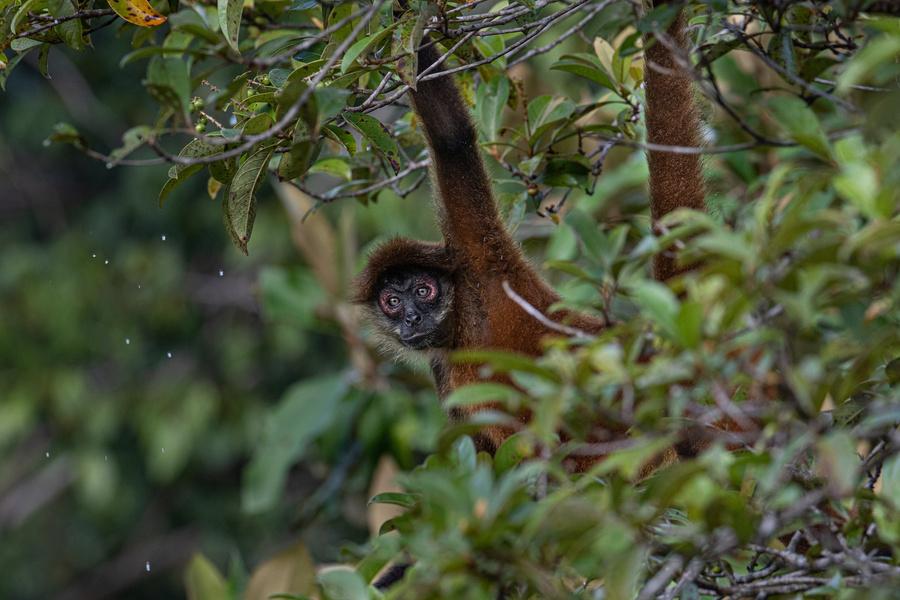
“AutomatedacousticdetectionofGeoffroy’sspider monkeyhighlightstippingpointsofhumandisturbance”
ProceedingsoftheRoyalSociety,February2023
“Climate-resilientconservationstrategiesforanendemic forestbird,theBlack-CheekedAnt-Tanager”
JournalofFieldOrnithology,March2023
Thisstudyintegratednewfielddataandthousandsof communityscienceobservationstoexploretheBlackCheeked Ant-Tanager’s (Habia atrimaxillaris) habitat requirements,diet,anddistribution.Thisstudyaimsto guide a strategy to protect the Black-cheeked AntTanagerinachangingclimate.ItillustratesthatBlackcheeked Ant-Tanagers occur in secondary forests, suggesting that the conservation and restoration of secondary forests may help protect this rangerestricted forest bird, especially through a targeted conservation strategy within biological corridors to buildconnectivitywithhigherelevations.
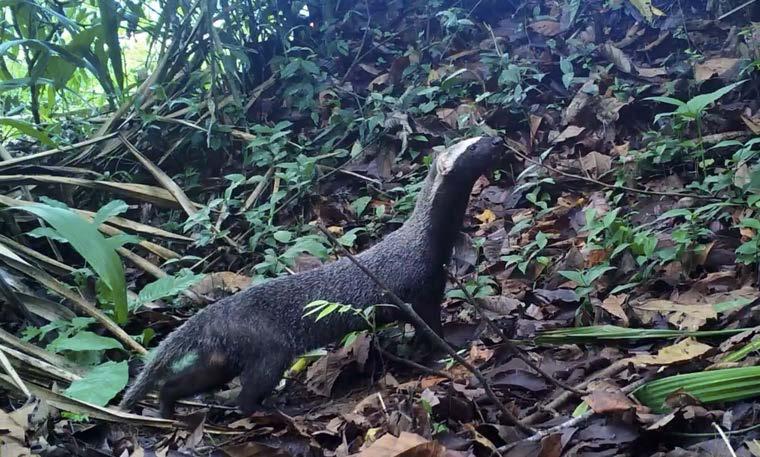
“GreaterGrison(Galictisvittata)predationeventsupon Paca(Cuniculuspaca)suggestacavitytargeted huntingstrategybyGreaterGrison”
NeotropicalBiodiversity,February2023
The elusive Greater Grison has been reported to predate mostly relatively small prey. Using citizen science observations collected via cell phones and social media, this study reports two separate predationeventsbyGrison(Galictis vittata) uponits largest known prey to date, the Paca (Cuniculus paca); both events in Costa Rica. These observations of Paca, a nocturnal cavity-dwelling rodent,beingpredatedupondiurnally,suggestthat Grison targets the burrows of such species as a huntingstrategy.
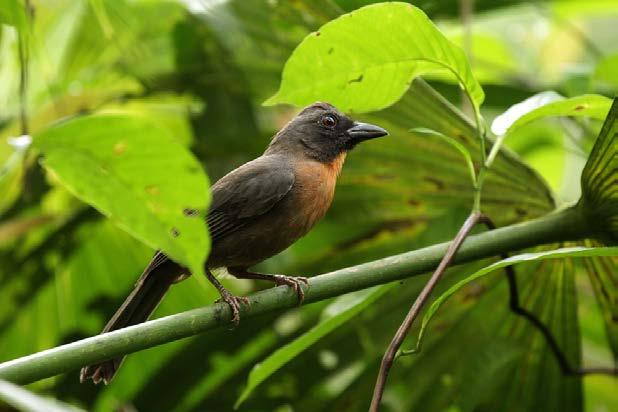
“Morethanonewaytocountacat:estimationofocelot populationdensityusingframeworksformarkedand unmarkedspecies”
BiodiversityandConservation,April2023
This study tested two methods for estimating the populationdensityofocelots (Leopardus pardalis) in the Osa Peninsula, Costa Rica, comparing methods formarkedandunmarkedspecies.
After two years of gathering camera trap data, the team determined spatially resolved individual detection to identify individual cats. As a result, they estimated an ocelot population density of 28.1 individuals/100 km2 in the Osa Peninsula. One can extrapolate that data to conclude an approximate population density of over 500 individual ocelots on the Osa Peninsula. This new information indicates ocelot density on the Osa Peninsula is among the highestintheworld’stropics.
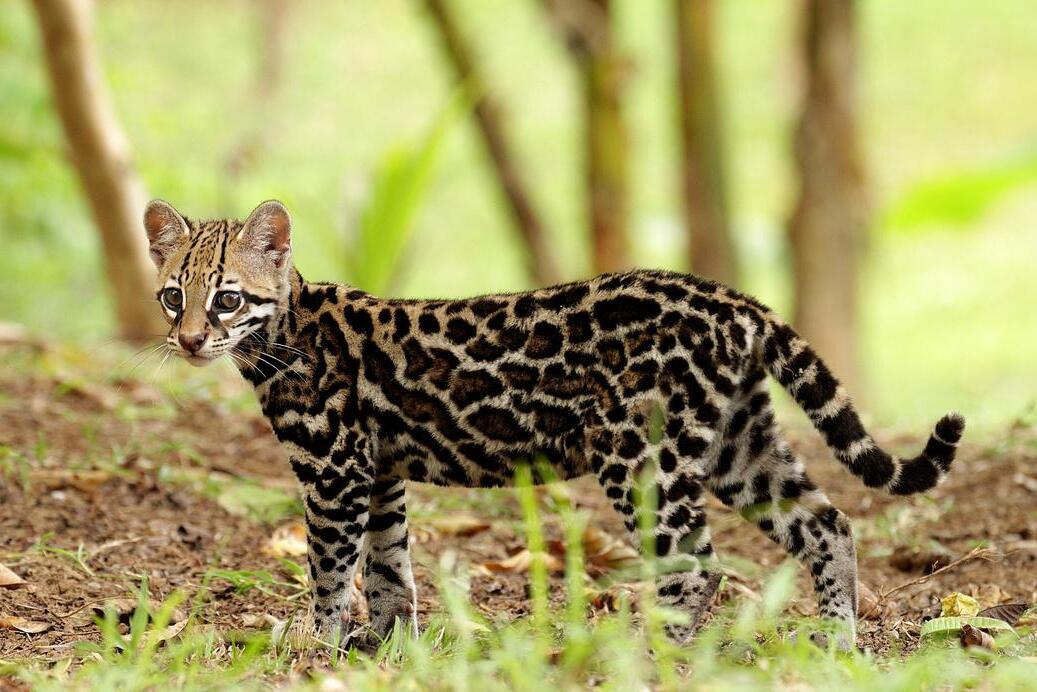

At Osa Conservation, we are demonstrating how restoring ecological connectivity along elevational gradients could be one of the most costeffective solutions to meet the double challenge of climate change and biodiversityloss.
OurworkinAmistOsaservesasaproofofconcept.Here,wearerebuilding habitatconnectivitybetweenlowlandandhighlandprotectedareas.We do this by empowering a network of local stakeholders to utilize biodiversity-friendly production and extraction practices on private land, andweprotectandrestoreforestsintheprocess.
Although developed in Costa Rica, this approach is designed to be implementedatscale.
IN2023,WEPUBLISHEDTHECONSERVATIONGUIDEONTHE
Central America hosts a disproportionate amount of biodiversity over a relativelysmalllandsurface.Weusedconnectivityanalysisdatatoidentify 10landscapesasclimateadaptationhubs.Inthesehubs,low-lyinglarge protected areas are close enough to high-elevation regions that landscape-level connectivity is feasible. That connectivity would help as manyofCentralAmerica’sspeciesaspossibleadapttoclimatechange.
Investing in these 10 ‘lifeboats for nature’ is our best chance to conserve biodiversity in the rapidly changing conditions that will face Central America.
In order to stem biodiversity loss, science shows conservation agendas worldwide should explicitly embed the strategy of facilitating species’ range shifts in response to climate change by restoring and rebuilding ecological connectivity along elevational gradients. This is particularly urgent in the Tropics, one of the regions most impacted already by climatechange.



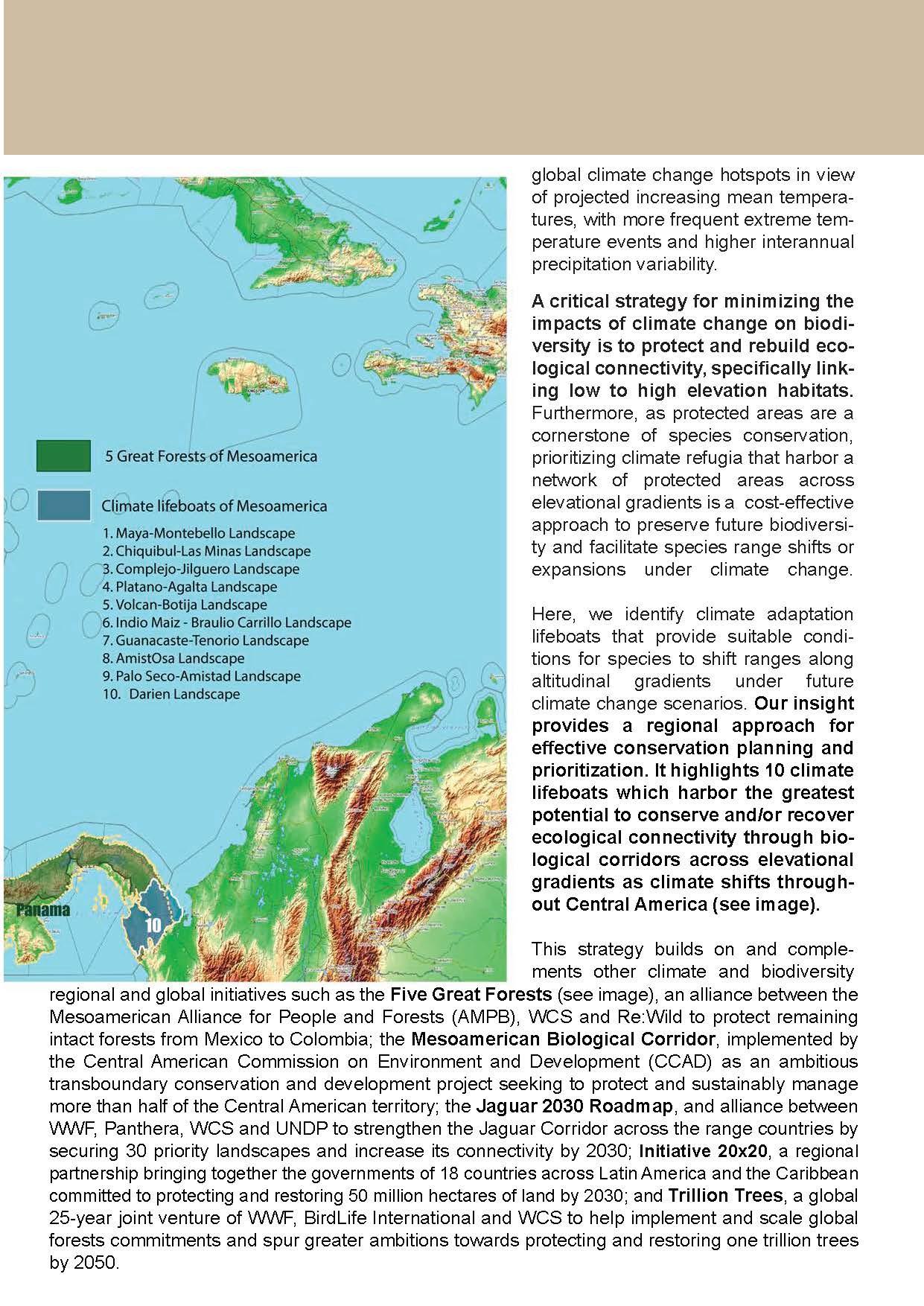
It is time for governments and wider society to act urgently to addressthebiodiversitycrisis,and for conservation organizations globally to accelerate and scaleup our collaboration for naturepositive outcomes. This work providesaroadmaptosafeguard connectivity between critical climate refugia across Central America.
If we build on what has already been achieved, and we explicitly account for the processes of climate change in our conservation agendas, we can ensure a better future for biodiversity,oursocieties,andthe planet.
-DR.CAROLINASOTO-NAVARRO CONSERVATIONPROGRAMSDIRECTOR OSACONSERVATION


The Osa Conservation Campus is the hub of our organization. Both a renowned visitor destination and the home of our conservation team, here state-of-the-art facilities, cutting-edge technology, and extraordinary landscapes form an incubator for innovation and talent in one of Earth’s greatest wild places.


To foster a mindset of conservation and develop researchcapacityamongoutstandingyoungscientists, ourUgalde-ForsythResearchFellowshipprovidesfullyfunded scholarship opportunities to early-career conservationists. Fellows live at the Osa Conservation Campus for six months, immersed in one of the most important neotropical landscapes on Earth while developingcrucialcareerskills.
Fellowsdrivescience-basedprojectsforward,exploring unanswered questions of ecology, biology, and conservation alongside our professional team. This opportunity provides field-based mentorship and equips Fellows with tangible career skills to solve realworldconservationissues.
IN2023,WEHOSTED

Vanessa Wynter led a research project with the goal of establishing genebanks of native species of Vanilla (V. pompona, V. planifolia and V. trigonocarpa) under different conditions to evaluate success and potential in agroindustry.



Luca Eberle documented the suite of conservation work happening at the Osa Conservation Campus. His project aimed to elevate the voices of researchers driving forward wildlife conservation.
Marion Fisher joined our Wildlife Team to design and deploy treetop bridges across the Osa Peninsula. Her research aimed to identify the effectiveness, improvements, and best choices for arboreal bridges to be utilized by treetop animals.
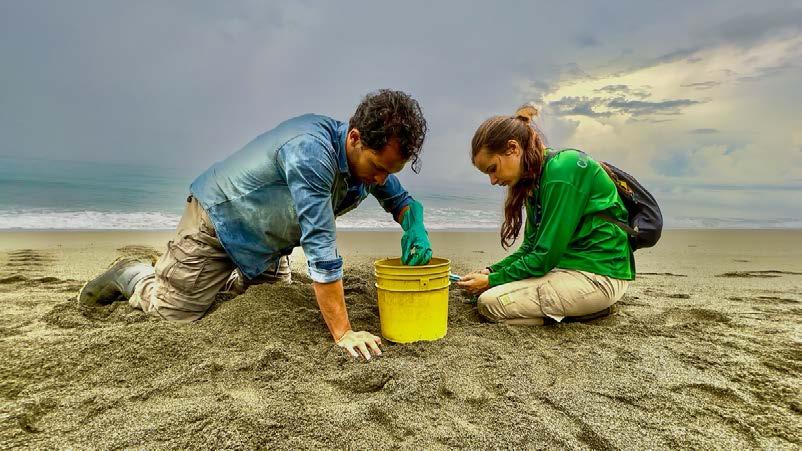
Greta Hernández led a research project on invertebrate community responses to experimental scavenger exclusion as a segment of our scavenger network research initiative.


Nicolás Camoza joined the Sea Turtle Conservation team to lead a research project on the impacts microplastic may have on sea turtle hatchling success.
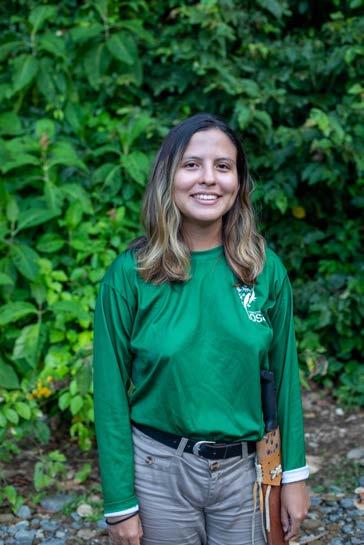

The Osa Conservation Campus directly protects 8,124 acres of wilderness via our private wildlife refuge. The campus encompasses diverse ecosystems, including ancient and secondary forests, mangroves, and the entire Piro River watershed. Here, we protect more than a dozen kilometers of untouched coastline and critical sea turtle nesting habitat. Our campusishometoOsa'ssolecanopytower andtheregion’slargestin-situarboretum.
Our campus is open to volunteers, researchers, student groups, tourists, and dayvisitorseagertoconnectwithnature.
IN2023,WECONNECTED
1,096VISITORS TONATUREATOURCONSERVATIONCAMPUS.
This year, we opened our Canopy Tower, whichclimbs100feetintothetreetops.The tower facilitates uniquely easy access for researchers studying the rainforest canopy and helps our team collect data on migratory bird movement thanks to the Motustowerdeployedatthetop.
THISYEAR’SVISITORSINCLUDED
309STUDENTS

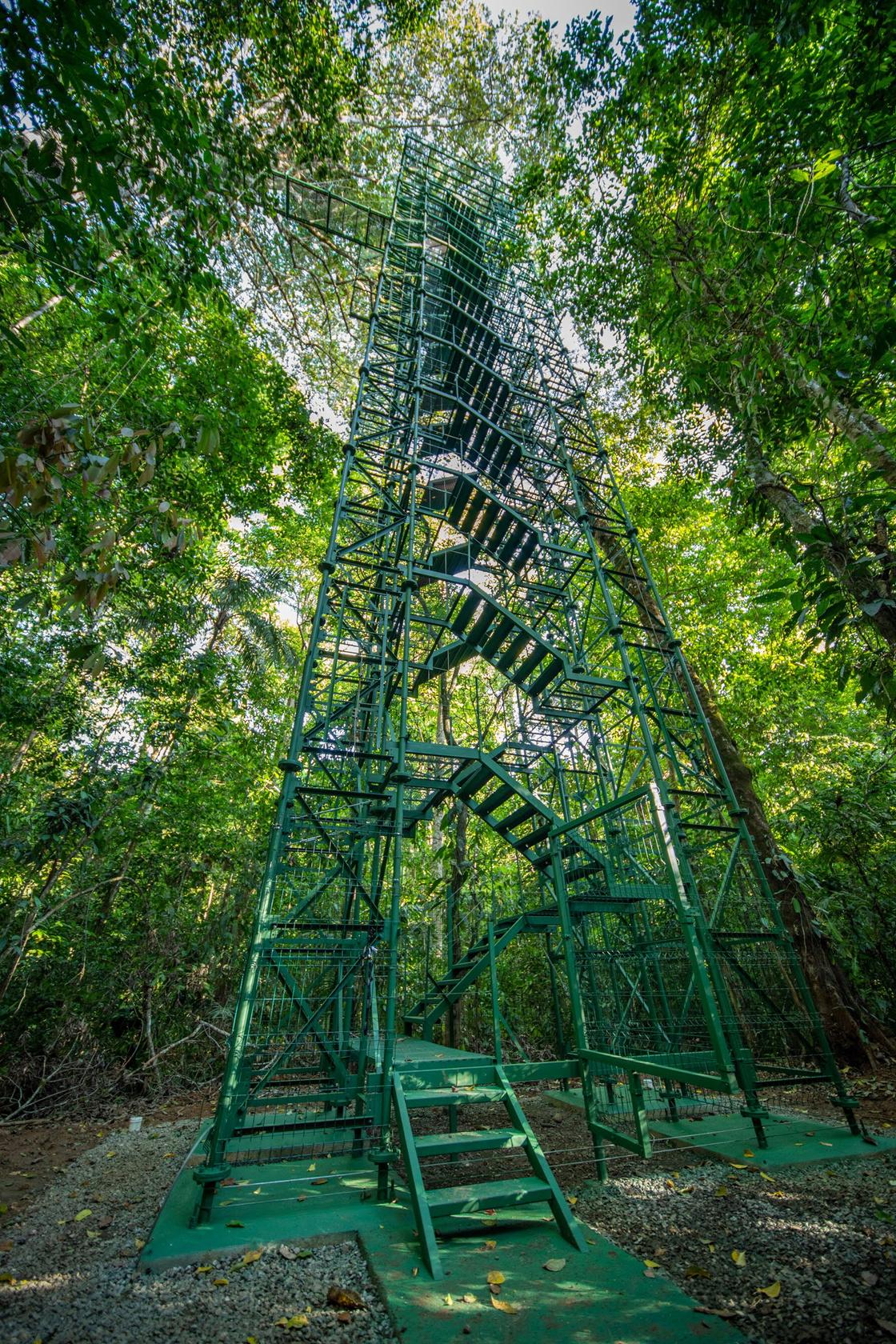

OurpartnershipwithOsaConservationhas provided us with a unique opportunity to conduct field trials of one of our groundbreakingtechnologies,theSentinel, which makes existing camera traps smarter, by adding powerful, near realtime,machinevisionthroughonboardAI.
Through this collaboration, we've gained invaluable insights, learning not only from our successes but also from setbacks you can only achieve through rigorous field

I have been conducting field research at the Osa Conservation Campus since 2017, supported by the passionate staff and dedicated conservation practitioners who have made me feel like part of their team. The accommodationsandresearchfacilitiesavailabletovisiting researchers allowed me to live and work on-site for 3-4 months at a time, enabling me to conduct my Ph.D. research.
Now,IfindmyselflookingforanyexcusetoreturntoOsa, notonlyformyresearchandpersonalvacationsbutalsofor collaborations with film crews to document the spectacular displays of animal behavior and wildlife that OsaConservationisdedicatedtoconserving."
–DR.BRANDONA.GÜELL POSTDOCTORALRESEARCHASSOCIATE, FLORIDAINTERNATIONALUNIVERSITY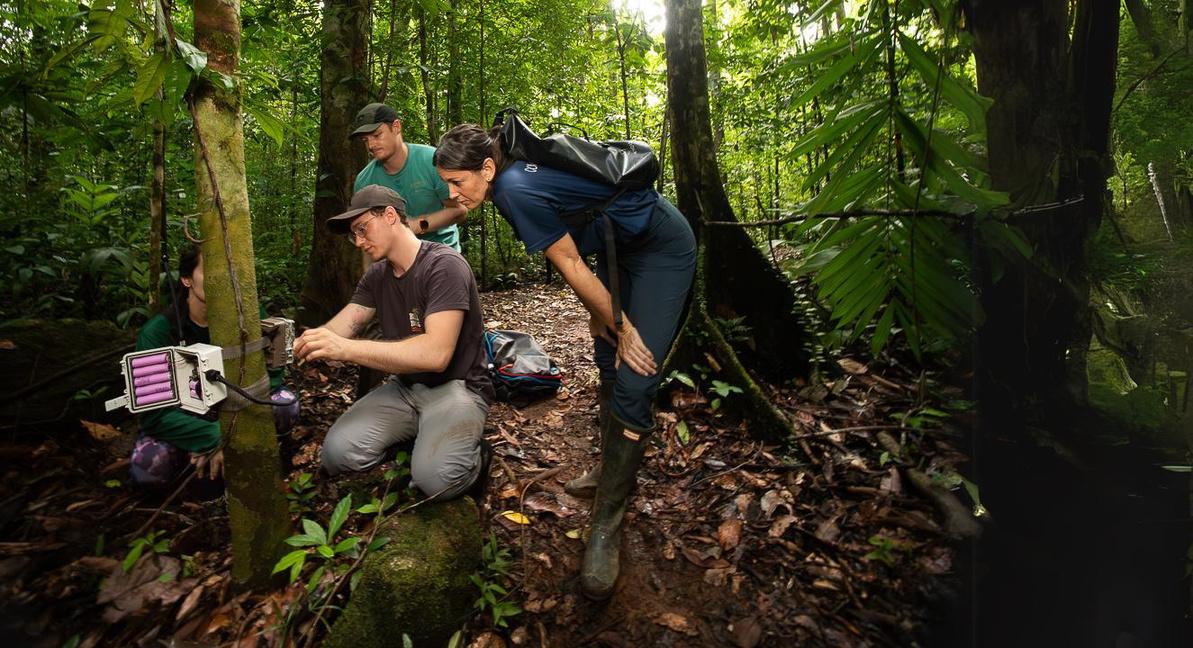




Scan this code to learn more about the Osa Conservation Campus.

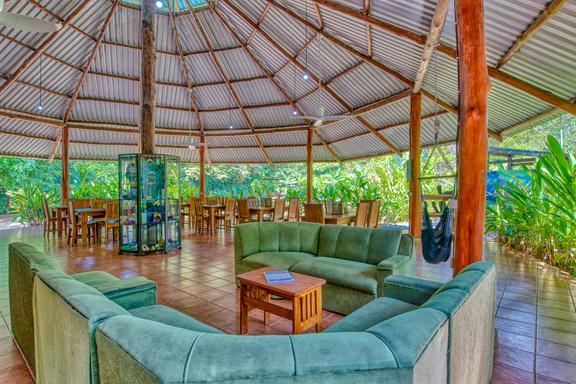
In2023,weexpandedourtrailsystemto encompass over 30 kilometers of forest and coastline. Now, you can follow the pristinePiroRiverthroughtherainforest., wade in remote waterfalls, and enjoy elevated viewpoints of the tropical canopy and Pacific Ocean. Our trails windthroughourin-situOsaArboretum, thelargestonthepeninsula.

As a visitor to the Osa Conservation Campus, you can book a hands-on sea turtleconservationpatroltohelpprotect threatenedseaturtletests.Ourteamcan provide lessons on sea turtle ecology and conservation while in the field and will take you to our beach-front hatchery, where we protect thousands ofseaturtleeggseachyear.
Ideal for university or high school groups looking for safe and easy access to wild ecosystems, our new dorm can accommodate 24 individuals. Newly constructed in 2023, this addition was designed to make our Campus a worldclass resource for educational experiences inthetropics.

Because our field station stands in the largestfragmentoflowlandwettropical forestsonthePacificslope,independent researchers from around the world conduct their projects on our campus. Our cabins renovated in 2023 provide privacy for professional researchers to comfortablyliveandworkon-site.

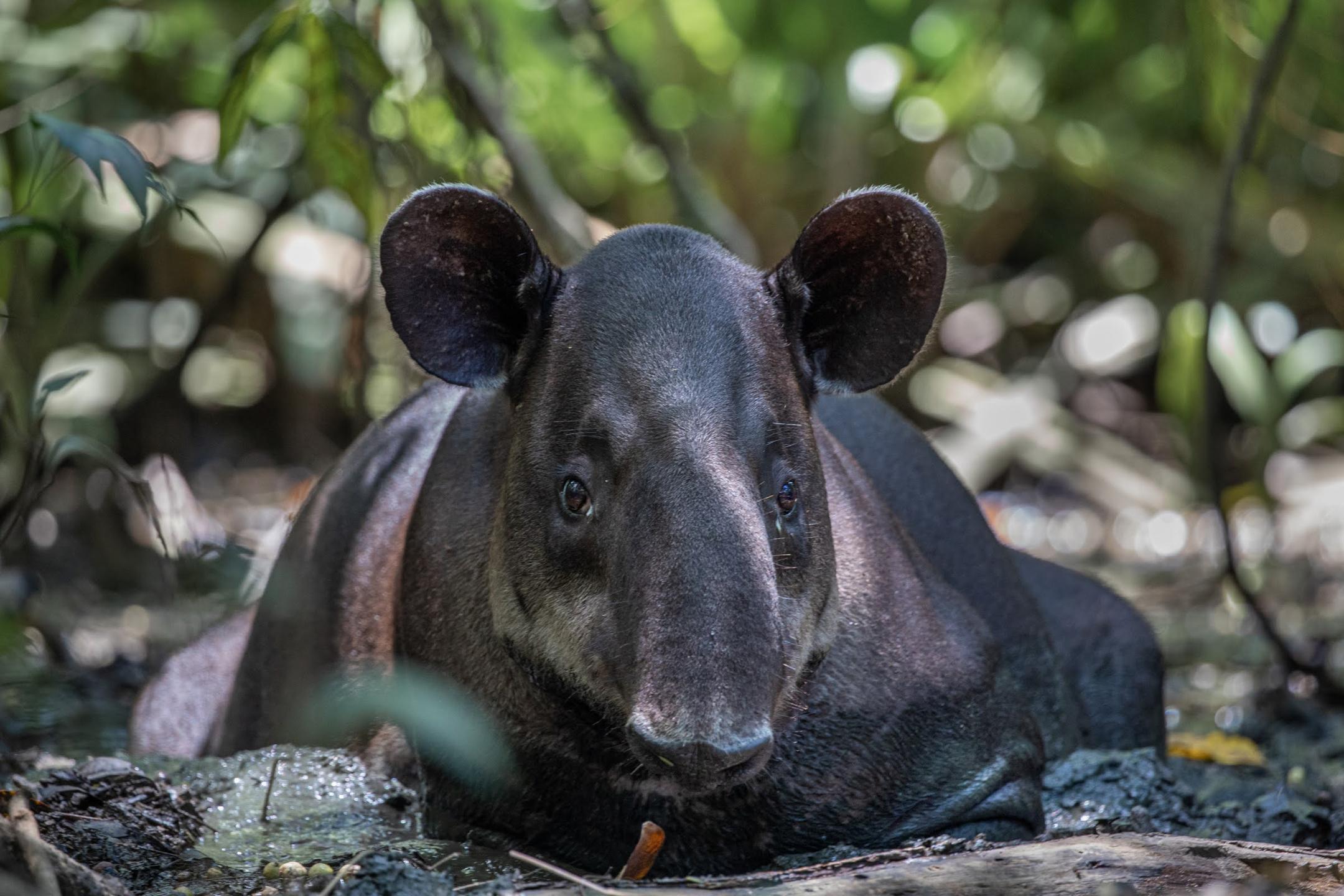





Scan this code to further support our work.